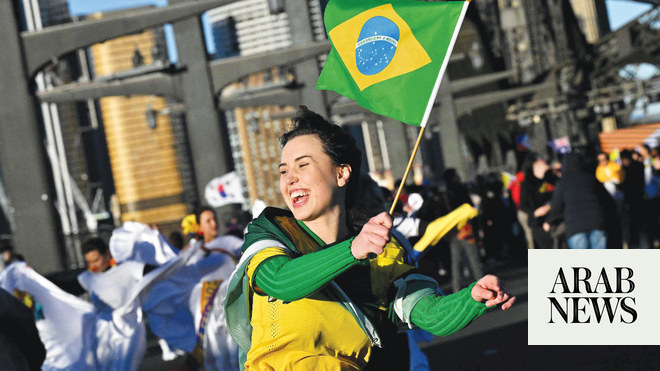
JEDDAH: Football fever has taken a grip on Saudi Arabia with the World Cup underway in Qatar.
Fans throughout the Kingdom have been glued to screens watching the action which saw the Green Falcons win their opening game 2-1 against Argentina.
And in Jeddah excitement has reached fever pitch with big screens popping up in all kinds of locations including cafes, lounges, and on the famous corniche.
The Red Sea port city has kicked off a multi-zone event, titled The Beautiful Game, offering indoor and outdoor areas to watch World Cup matches on big screens, football-themed games, and face-painting sessions.
The zone also includes a World Cup Museum on the history of the game, showcasing some of its greatest players.
Open for the duration of the tournament, the exhibits include the first leather match ball from England, dating back to 1930. During that decade players wore berets to prevent head injuries from ball laces.
Exhibit organizer, Mawada Al-Zain, told Arab News: “In the 1930s, the football was in its primitive form and had laces. It had not taken on its full form, and it wasn’t until the 1940s that the shape was improved. In the 1950s, it took on its complete round form without any laces.”
Among other items on display at the museum are goalkeepers’ gloves. England’s 1966 World Cup-winning goalkeeper Gordon Banks wore one of the first pairs of gloves specially designed for shot stoppers at the 1970 World Cup. High-grip pimpled rubber gloves, on show at the exhibition, began to appear in sports shops in the early 1970s.
Al-Zain said: “Danish goalkeeper Peter Schmeichel said gloves were an essential tool for goalkeepers, and he improved on them with sports equipment company Umbro.”
The museum’s Land of Legends zone has jerseys worn by 12 high-profile retired and current players.
Another of the exhibition organizers, Odai Abduljawad, highlighted former Italian footballer Francesco Totti.
“This player was loyal to his team (Roma); he started with that team, and retired with that team. He played 843 games, scored 316 goals, and had 58 caps (playing for the Italian national side),” he said.
In the Stadiums zone, visitors can see footballs used in World Cup matches from 1930 through to 2018.
Organizer Abdulrahman Al-Zaidani told Arab News: “It’s quite a story, starting with the first football from 1930, and the match between Uruguay and Argentina, when they contemplated which football to use; Uruguay’s or Argentina’s.
“They agreed that each team used their own football to which they found different results; Argentina scored more in the first half using their football, and Uruguay scored more in the second half of the game.
“That is when they discovered different weights and sizes to the primitive leather and laced form of the football,” he said.
The Telstar Durlast was the first ball developed and delivered to the World Cup by Adidas for the 1970 tournament in Mexico.
The ball had been specifically designed to make it easier to see on black-and-white home television screens. Its iconic white hexagon and black pentagonal leather panels design is still used today.
For the 2018 World Cup in Russia, Adidas produced its Telstar 18 ball with a new panel design and incorporating near-field communication chip technology.












